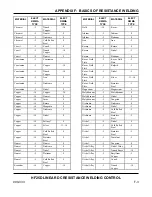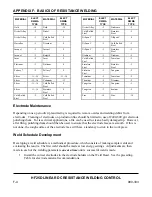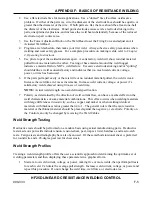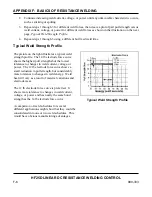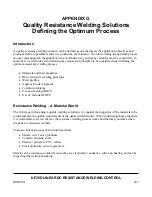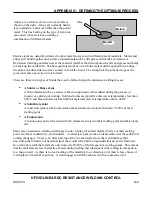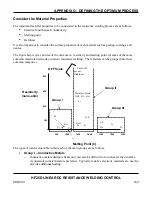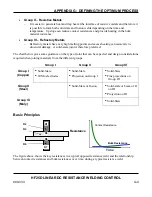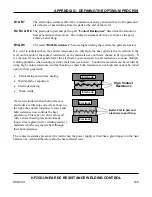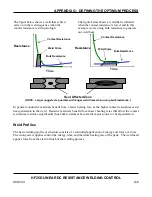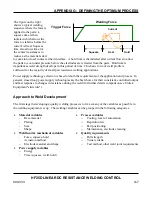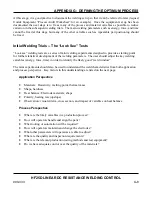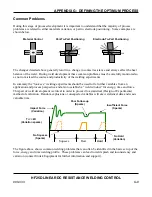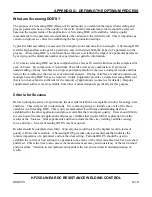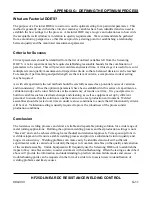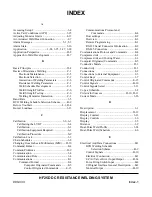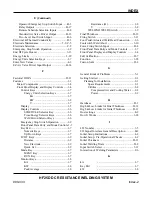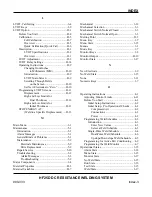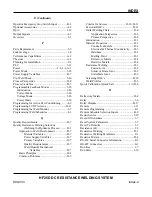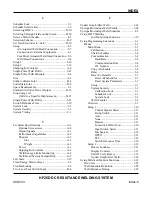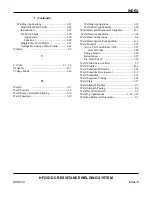
APPENDIX G: DEFINING THE OPTIMUM PROCESS
HF25D LINEAR DC RESISTANCE WELDING CONTROL
990-333
G-11
What are Factorial DOE’S?
The purpose of a Factorial DOE is to narrow in on the optimal setting for a particular parameter. This
method is generally used when the critical or main key variables have been identified and we need to
establish the best settings for the process. A factorial DOE may also give an indication as to how wide
the acceptable weld window is in relation to quality requirements. We recommend data be gathered
from a monitoring perspective so that this can provide a starting point for establishing a relationship
between quality and the monitored measurement parameter.
Criteria for Success
Critical parameters should be identified from the list of unfixed variables left from the Screening
DOE’S. A mini experiment maybe required establishing reasonable bounds for the combination of
parameters to be tested. This will prevent void data and wasted time. At this stage it is useful to record
multiple relevant quality measurement or inspection criteria so that a balanced decision can be reached.
For example if part marking and pull strength are the relevant criteria, a compromise in ideal setting
maybe required.
As with all experiments the test method should be carefully assessed as a potential source of variation
and inconsistency. Once the optimum parameters have been established in this series of experiments, a
validation study can be run which looks at the consistency of results over time. It is good practice to
build in variables such as electrode changes and cleaning, as well as equipment set up by different
personnel to ensure that the solution is one that can run in a real production environment. Welded
assemblies should be tested over time an under real use conditions to ensure that all functionality criteria
will be met. Validation testing is usually required to prove the robustness of the process under
production conditions.
Conclusion
The resistance welding process can deliver a reliable and repeatable joining solution for a wide range of
metal joining applications. Defining the optimum welding process and best production settings is not a
“black art” and can be achieved through a methodical and statistical approach. Time spent up-front in
weld development will ensure a stable welding process and provide a substantial return in quality and
long term consistency. Welding problems can more easily be identified and solved if sufficient
experimental work is carried out to identify the impact of common variables on the quality and variation
of the welded assembly. Unitek Equipment will frequently use the Screening DOE tool to establish the
impact of key variables and also to assist customers with troubleshooting. Often the testing as described
above will provide the information and understanding to predict common failure modes and causes. A
troubleshooting guide can be requested in the form of a slide rule to assist users in identification of
welding problems and likely causes.
Содержание HF25A
Страница 9: ...HF25D DC RESISTANCE WELDING SYSTEM 990 333 ix ...
Страница 10: ......
Страница 20: ......
Страница 84: ...CHAPTER 6 CALIBRATION HF25D DC RESISTANCE WELDING SYSTEM 990 333 6 4 Final Calibration Setup ...
Страница 113: ......
Страница 129: ......
Страница 153: ......
Страница 171: ......

